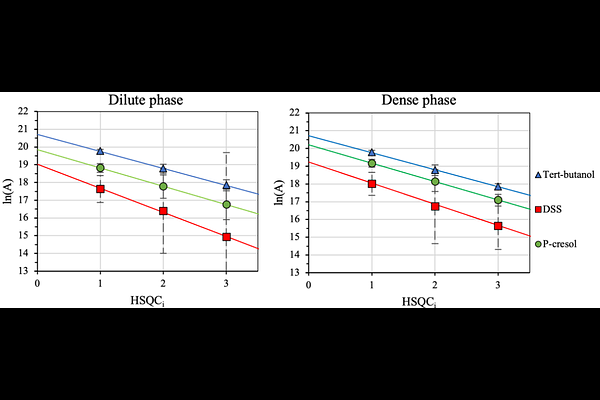Quantification of small molecule partitioning in a biomolecular condensate with 2D NMR spectroscopy

Quantification of small molecule partitioning in a biomolecular condensate with 2D NMR spectroscopy
Buhl, J. M.; Mahapatra, S.; Kjaergaard, M.; Mulder, F. A. A.
AbstractSeveral intrinsically disordered proteins have been shown to undergo phase separation into a dense and dilute phase and this process is intimately linked with the regulation of cellular processes. It is therefore highly relevant to know how metabolites partition between these phases. We show here that the partitioning of components in a complex mixture can be robustly obtained from a single set of 2D NMR spectra recorded on the dilute and dense phases separately using a so-called \"time zero extrapolated approach\" known as HSQC0. The spectral separation power of 2D NMR spectroscopy circumvents the need for physical isolation or workup of the mixture components in the two samples. Using quantitative 1D 1H NMR, it is validated that the HSQC0 approach effectively removes all the undermining effects that plague quantification in common 2D NMR experiments, including differential attenuation due to relaxation in the two phases, pulse imperfections, partial decoupling, off-resonance effects, and incomplete coherence transfer in the case of scalar coupling variation. These results should be of widespread interest as partitioning into biomolecular condensates is crucial for the calibration of computational physicochemical models of phase separation and key to the further understanding of cellular biochemistry involving membraneless organelles.